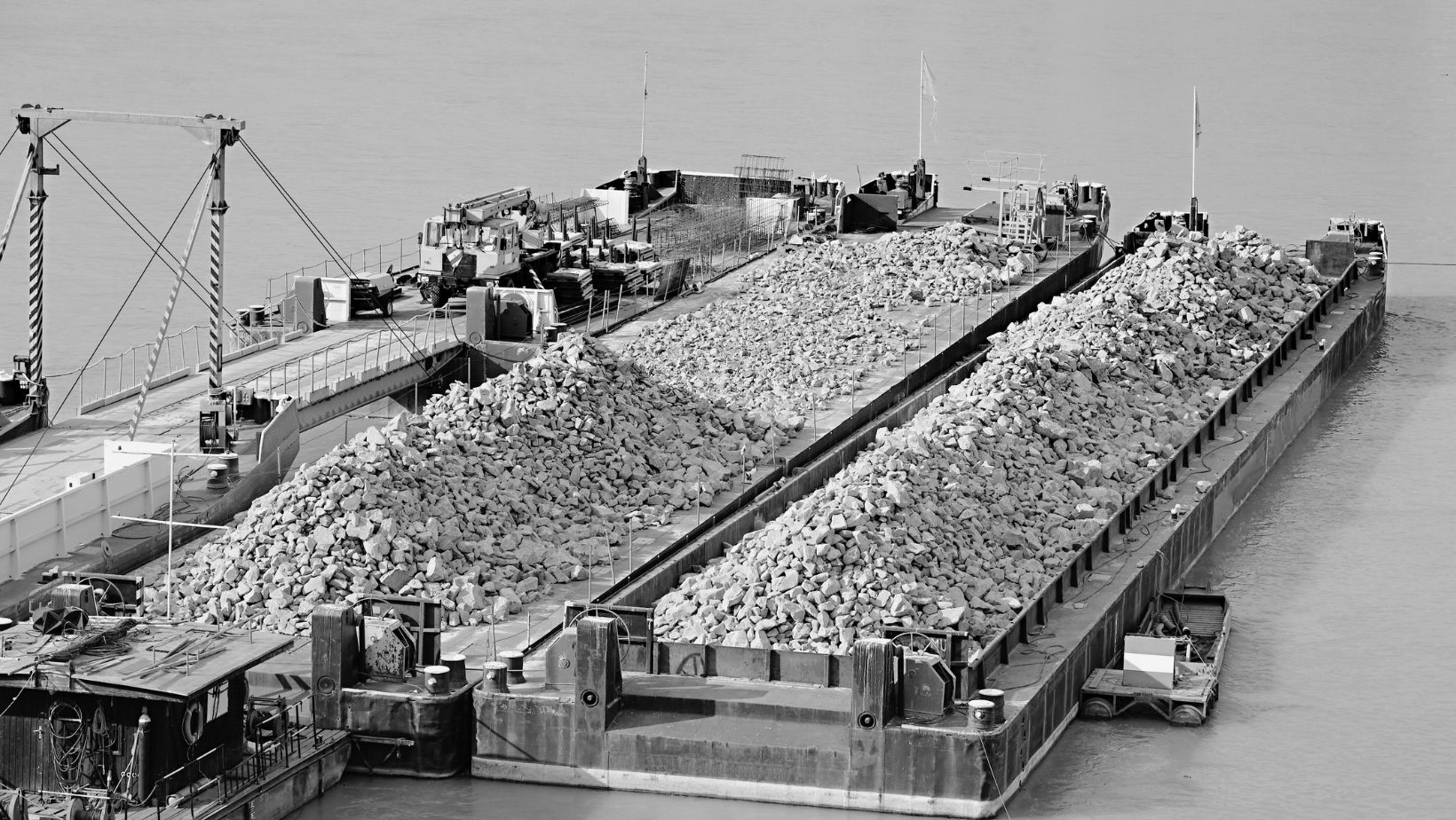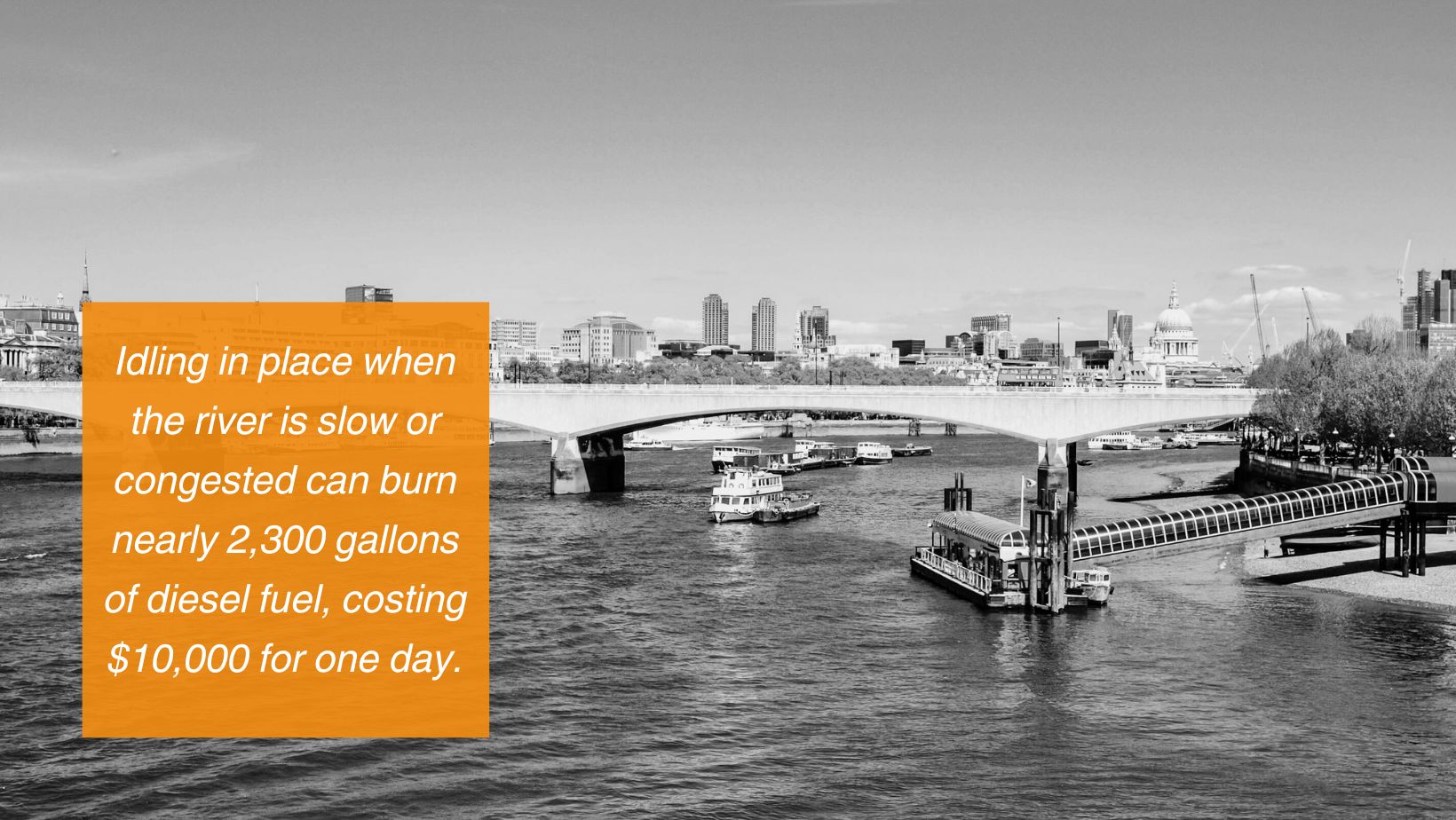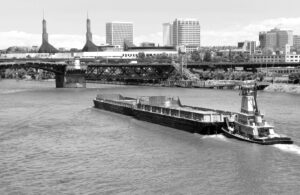
There’s no question that fuel costs for inland waterway transportation are lower than other modes. A report commissioned by the U.S. National Waterways Foundation shows that barges can move a ton of cargo 647 miles with a single gallon of fuel, compared to trains at 477 miles per gallon, and trucks at 145 miles per gallon. The report also estimates that the amount of cargo currently transported on major rivers is equivalent to more than 49 million truck trips annually.
But despite barge transportation being the most affordable and most efficient shipping method, filling a tow boat with 50,000+ gallons of fuel isn’t cheap. At $2.80 per gallon for diesel, barge operations companies can spend around $140,000 per vessel. Fuel costs represent as much as 80% of operating expenses per trip—not to mention that fuel emissions from barge operations are a significant contribution of greenhouse gasses (though still much better than land transport).
Any marine transportation company that can achieve greater fuel efficiencies than competitors will develop a competitive advantage and reduce their environmental impact. Here are some tips for doing just that.
Strategies for Improving Barge Operational Efficiency
There are a number of things companies can do to optimize fuel consumption.
Monitor River Levels
Low river conditions can reduce a normal 200-mile travel day to just 15 miles. Idling in place when the river is slow or congested can burn nearly 2,300 gallons of diesel fuel, costing $10,000 for one day. It’s not always possible to delay shipments, but checking for rain and calculating how long it will take after the river rises could end up improving your bottom line.
Optimize Speed
The amount of fuel a vessel burns is highly sensitive to the speed it’s traveling. Roughly, a 10% speed reduction will decrease fuel consumption by over 20%, and a 20% speed reduction will use 45% less fuel. Of course, calculations must be made to verify if increased voyage times are worth the fuel cost reduction.
Replace Older Engines with Newer, More Efficient Engines
With new hybrid diesel-electric engines, maturing tugboats can be upgraded to become 10% more fuel efficient and emit lower fuel emissions. Retrofitting with new engines can reduce the load demand on engines for propulsion, and installing variable speed generator sets could increase vessel efficiency by up to 20%, compared with using constant speed gensets.
Some newer electronic engines like Caterpillar MTU 4000 series come with wheelhouse readouts of fuel burn rate and engine load, allowing the captain to review fuel burn efficiencies and make operational changes as needed.

Invest in Fuel-Flow Monitoring Equipment for Wheelhouse and Shore-Side Management
Some electronically controlled diesels provide fuel-burn readout, but some tug companies are turning to more elaborate fuel management systems. The sophisticated systems provide fuel-related data that the captain can use with hands on the throttles, as well as shore-based vessel and fleet managers. Engine and fuel data is transmitted by satellite to data centers and then easily accessible on websites, allowing shore managers to review exactly how much fuel was burned on a particular assist or towing job and at what speed. In many cases, fuel costs can be lowered by pulling back the throttles just to the point where the vessel can go as fast as possible.
Use Shore Power Between Jobs
Although many U.S. ports don’t have the infrastructure to connect to vessels with shore power components, more of them are jumping on board. Port NOLA announced in 2022 that the Louisiana International Terminal will be equipped with shore power by 2028, allowing vessels to connect to onshore electricity and turn off diesel engines while at dock. Boats can be retrofitted with vessel-side infrastructure to connect to port shore power systems. According to the EPA, switching to shore power can reduce overall pollutant emissions by up to 98%, and save 10% in fuel costs.
Options for Reduced Fuel Emissions
While boats on the riverways produce fewer emissions than, say, a comparable fleet of trucks, they do still pollute. With hopes of cutting greenhouse gas emissions in half by 2050, the Environmental Protection Agency (EPA) and International Marine Organization (IMO) are exploring new innovations in maritime fuel technology. The pros and cons of each will need to be weighed before choosing an alternative option, but these technologies are worth keeping an eye on.
Methanol is widely available throughout the river system and gives a similar mpg range to diesel, but could lead to a tank-to-wake CO2 reduction of about 7% compared to diesel.
Liquefied Natural Gas (LNG) is getting a great deal of attention in the marine community because it burns cleanly, and in some cases has a relatively low cost differential when compared to distillate or heavy fuel. However, combustion of LNG is not more efficient than combustion of diesel, and it requires considerable energy to liquify and transport LNG fuel.
Biofuels are already seeing limited use as marine fuels. They are renewable and low in carbon emissions, but have limits. Renewable diesel requires no engine modifications, but doesn’t like water or high temperatures, and can grow algae if not handled properly.
Batteries can reduce fuel costs substantially and can give two to three times the instant power of a conventional engine. However, the throttle controls for battery power can be so sensitive that they have to be tested extensively to calibrate the controls.
Most commercial vessels have operating lives of 20-30 years, and many boats being built this decade will still be in operation in 2050. Modifying existing diesel engines to operate in hybrid-mode, and using alternative fuels and propulsion methods can help accelerate decarbonization while improving barge operation efficiency.
Keeping an Eye on Efficiency
Fuel use is just one way that modern companies are striving to become more efficient. Another way is through the use of more modern technology for things like logs, fleeting operations, and port communications. This is where BargeOps can play a role, helping your company to be more streamlined and efficient. Contact us today so we can help you on your journey towards making your barge operations more efficient.


